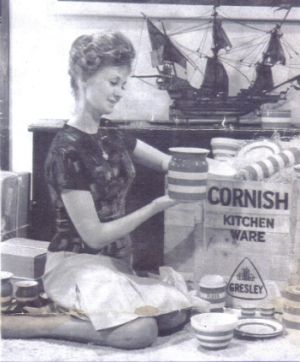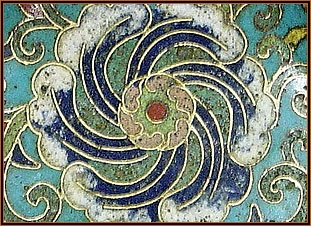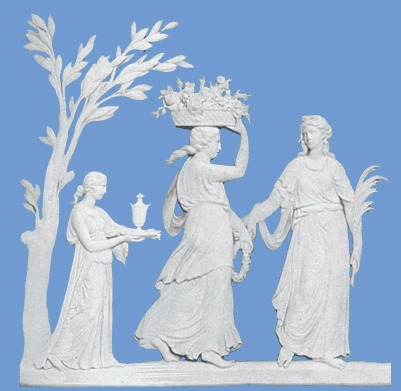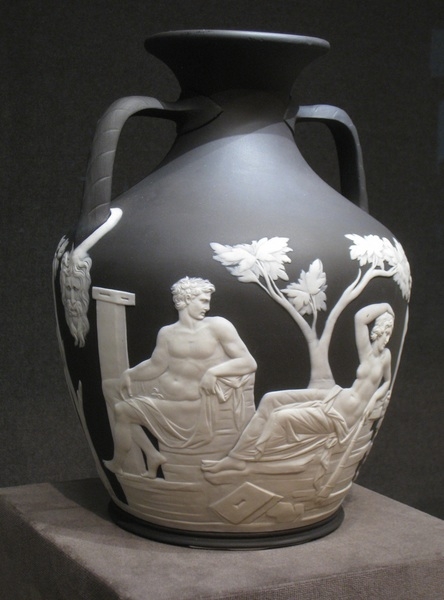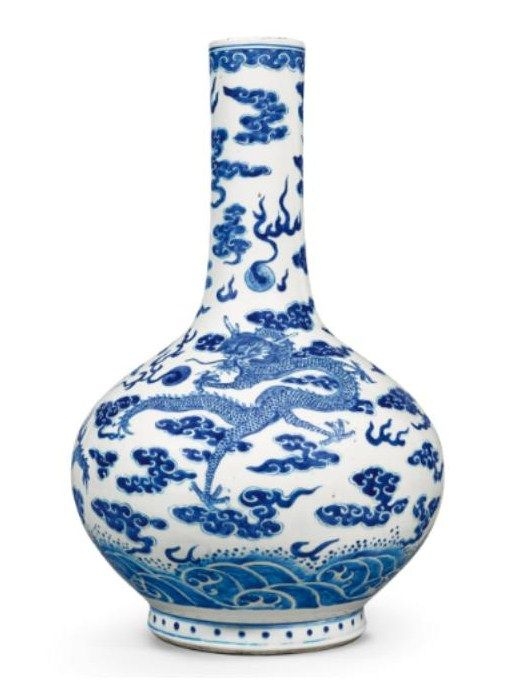| Glaze Terminology | |
| Glaze | The shiny ‘varnished’ surface of the jar, applied after painting (and lettering if applicable) a piece. |
| Crazing | Word used to define the fact that the glaze has some crackling. Sometimes you need to examine a piece under a light source or at a natural source like a window in order to see this properly. This does not mean your piece is cracked but crazing does detract from its value. |
| Fine crazing/Eggshell | Very fine overall ‘joined up’ crazing, normally all over a piece |
| Craze line | A single line of craze in the glaze, a minor fault. |
| Glaze Rub | An area where the glaze has rubbed away to reveal the paint beneath, usually resulting in some discoloration to that area. |
| Mottling | Area of brown spots or dots usually associated with rims of jars or underneaths of lids |
| Underglaze | Literally ‘Underneath the glaze’ or ‘at time of firing’. Normally refers to a minor fault that has occurred at manufacture. |
| Damage Terminology | |
| Chunk | A larger area of pottery missing than a chip, i.e. depth to the missing piece. Will detract considerably from value |
| Crack | A discernable break in the ceramic from one side through to another. Piece likely to break if not treated carefully. Makes a piece almost worthless usually. |
| Flea-bite | A miniscule surface chip, usually associated with the area around shaker holes where they have been cleaned with a fork etc and caused a very tiny chip to the hole. |
| Hairline | An extremely thin fracture in the pottery, literally no wider than a human hair. Detracts from value. |
| Scratch/Utensil Mark | A small mark in the glaze (not the actual ceramic) – usually a minor fault. |
| Shadow | A noticeable difference in the colour of the paint under the glaze producing a ‘shadow’ effect. Normally caused by the contents of the vessel slowly seeping into the ceramic, e.g. butter or oil. |
| Stain | An area of discernable difference in surface colour, likely to be easily bleached away. |
| Surface chip | Literally a chip on the surface, i.e. it has no real depth so unlikely to have caused much harm to the ceramic. Will detract considerably from value however. |
| Manufacturing Faults | |
| Anomaly | A small piece of excess clay (or slip) on the surface of the pottery that has been fired and then painted over usually. Not uncommon and not a major fault unless its detracts very visually from the piece. |
| Bubble | A small dimple in the ceramic from firing, underneath the glaze. Minor fault. |
| Excess Ink | As the lettering on named jars was hand applied it is not unusual for there to be some slight smudging or blurriness of the lettering occasionally. The cleaner the lettering generally the more desirable the piece. |
| Fissure | A small area where the pottery has opened slightly in a small line during firing, normal caused by some minor stressing, commonly at the neck of a jar or the base. Not uncommon on earlier pieces but does detract a little from value. |
| Pinprick | A tiny bubble, literally about the size of a pinprick, in the ceramic from firing, and underneath the glaze, though it can appear to be right through it as the glaze may not have taken over the pinprick. Minor fault. |
| Thumbnail | Literally an area of the pottery that has what appears to be a thumb nail mark under the glaze, i.e. from the potters own hand. Minor fault. |
Credit: Cornishware.biz

